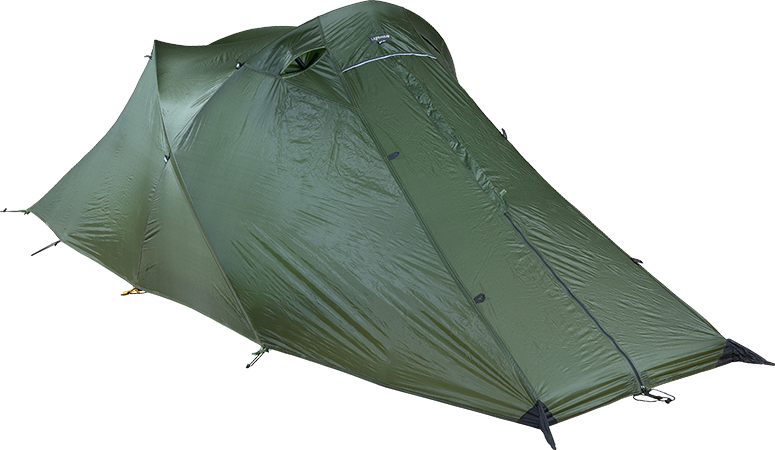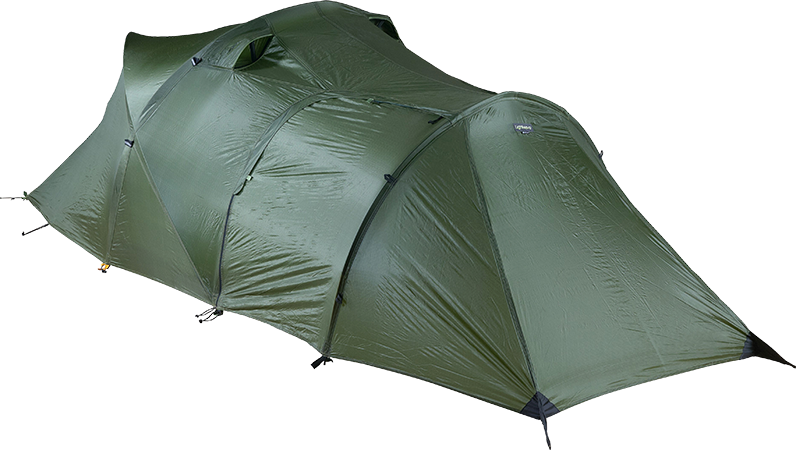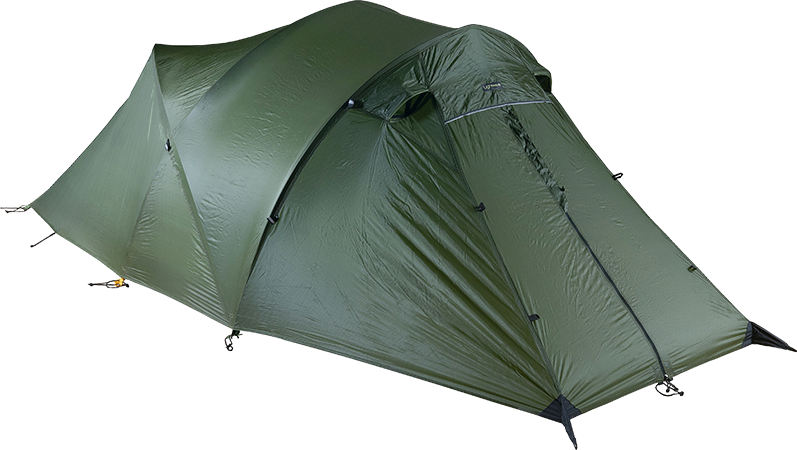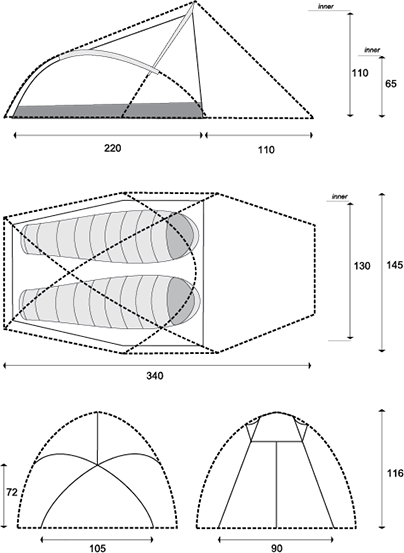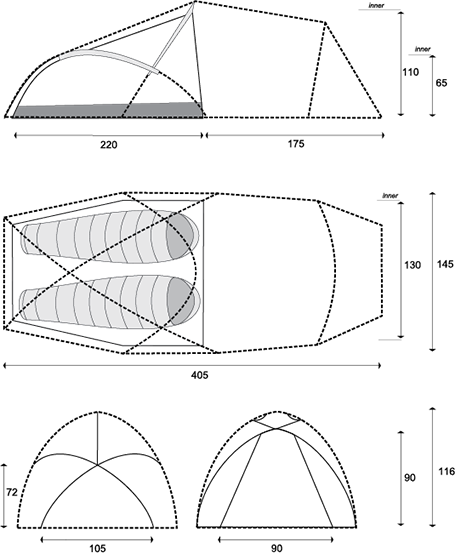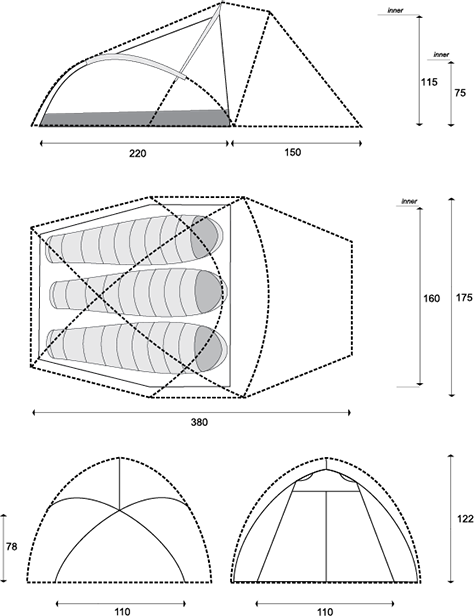Flysheet
48 g/m2, 30d nylon 6.6 ripstop, silicone-coated both sides,
5000 mm hydrostatic head, factory-taped seams.
The ultra flysheet is made from nylon 6.6 with a yarn thickness of 30 denier. There has been a trend in recent times towards the use of 20 denier or even 15 denier yarns in many lightweight and ultra-lightweight tents. Lightwave believes such fabrics lack the intrinsic strength that a flysheet needs if it is to withstand high winds and provide long-term durability. 30-denier yarn offers this strength while still remaining extremely light. The strength of the ultra flysheet is further assured by using only high-tenacity nylon 6.6, which has a higher tensile strength than normal nylon. Finally, the fabric is silicone-coated on both sides for water resistance to a hydrostatic head of 5000 mm. As well as being the most durable and water-repellent coating of them all, silicone has another major advantage over conventional polyurethane (PU): it doesn’t affect the fabric strength. PU coatings can reduce the tear strength of nylon fabrics by up to 70%, in our view making them less suitable as a flysheet coating – especially on very lightweight fabrics which have a relatively low tear strength to start with.
Groundsheet
70 g/m2, 50d nylon 6.6 ripstop, 3-pass PU-coated
5000 mm hydrostatic head, factory-taped seams
The ultra groundsheet is made from a 50-denier nylon ripstop with an outstanding polyurethane coating. We have been using this fabric for ten years and have been extremely impressed with its durability – for its weight, it is undoubtedly the best available. It is also the most expensive material we use.
Inner canopy
35g/m2, 30d nylon 6.6 ripstop, DWR treated
Poles
Yunan 8.64mm / 9.60 mm 7001-T6 Ultralight poles with Unit connectors
(The g15 has DAC 8.84 mm Featherlite poles)
The g20 ultra and g20 ultra xt tents use 8.64 mm Yunan Ultralite poles. The g30 ultriX uses wider 9.60 mm poles. These all feature a new Unit connector that eliminates the need for an elastic cord to link all the sections. Apart from making the poles lighter, it also means broken or badly bent sections are much easier to replace.
Pegs
Lightning pegs, 11 g each, square section (g20 - 6 pegs / g30 - 4 pegs)
Wavelight pegs, 12 g each, corkscrew design (all models - 4 pegs)
Titanium V-pegs, 10 g each, V-shape (all models - 4 pegs)
Flash pegs, 7 g each, rectangular section (g20 xt and g30 - 4 pegs)
Pegs are very important – without them, no tent could withstand anything more than the slightest breeze. Lightwave offers a range of different pegs with the ultra tents to ensure they can be secured in all ground conditions.
Guylines
1.50 mm Dyneema/polyester, 3 m length, mini-Linelok adjusters
Ultra tents come with our Lightning guylines, a 1.50 mm blend of Dyneema and polyester with a breaking strain of 110 kg. Phenomenally light, they also absorb no water so won’t freeze up in winter. The Linelok adjusters mean they are easy to tension, even with gloves on.
